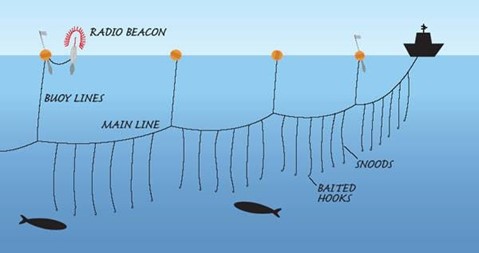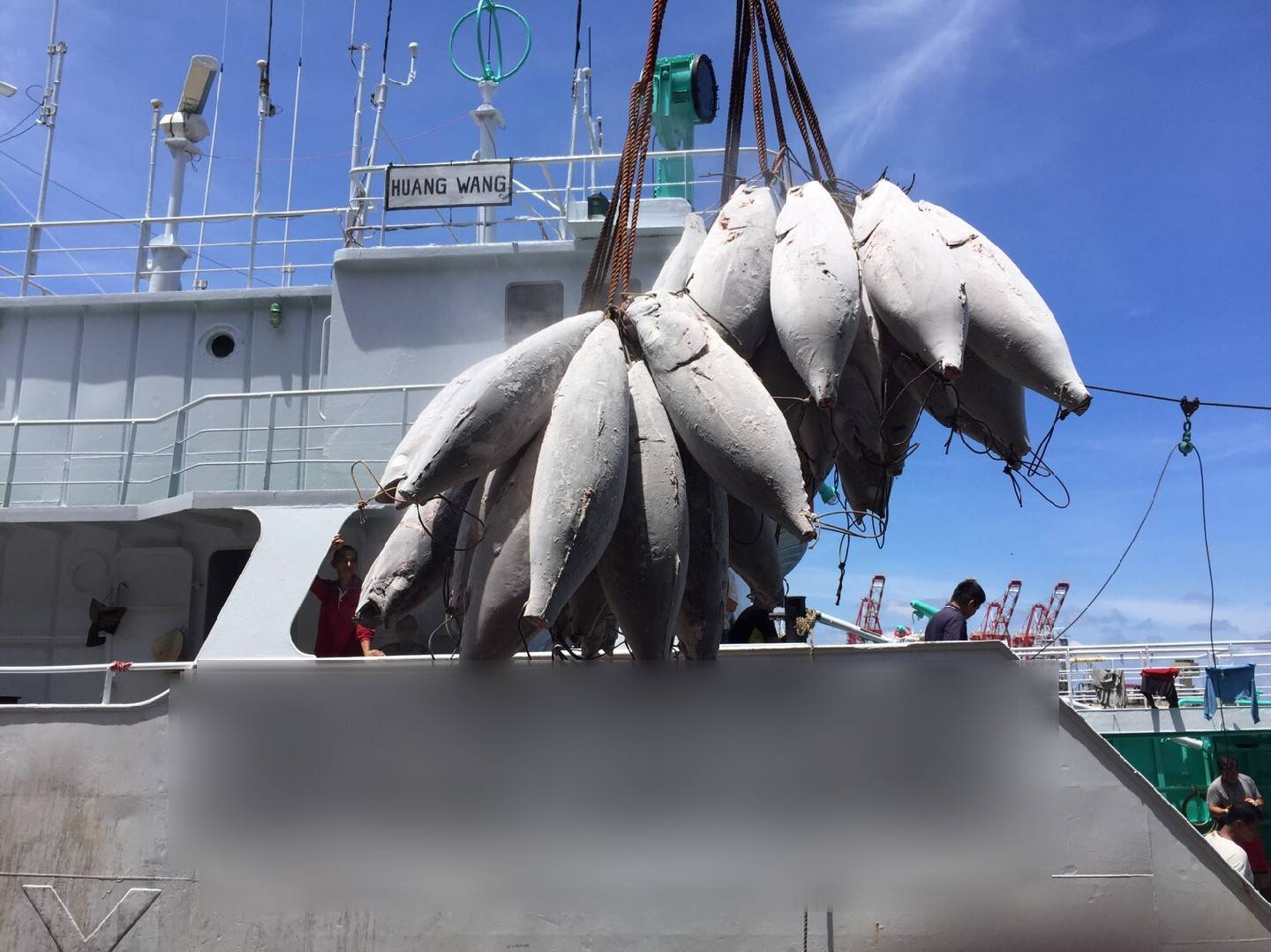| Unit of Assessment | Description |
| Target Species (Common name and scientific name) | Albacore Tuna (Thunnus alalunga) |
| Fishery location | Pacific Ocean |
| Gear type | Pelagic longline |
| Catch quantity (weight) | North Pacific Albacore Tuna: 2,312 tons (2019) South Pacific Albacore Tuna: 4,787 tons (2019) |
| Vessel type and size | Large-scale tuna longline vessel |
| Number of registered vessels | 24 Taiwan-flagged fishing vessels; 5 Vanuatu-flagged fishing vessels |
| Management authority | National level: Taiwan Fisheries Agency and Vanuatu Fisheries Department Regional level: WCPFC and IATTC |
The fishing vessels participating in the Taiwan Tuna Association Fishery Improvement Project are longline vessels targeting Pacific Albacore, among them are 24 Taiwan-flagged fishing vessels and 5 Vanuatu-flagged fishing vessels.
Albacore tuna or by its scientific name Thunnus alalunga, famous for its long pectoral fin (takes up about 30% of its body in length), is one of the relatively small tuna, about 1 meter in length, among all tuna species. They can be found in the temperate waters in 3 major oceans, its habitat is in the water under the thermocline. Albacore tuna is tender and delicious with the color of light pink, almost close to white. In addition to be made into canned tuna, it can also be served as sashimi. Albacore tuna is one of the major species in Taiwan longline fisheries.
Longline is a commercial fishing technique, which is used throughout the world’s oceans to capture tuna and tuna-like species. Longline consists of a single main line, branch lines, fishhooks, floats and buoy lines (see Figure 1). The way how longline works is through branch lines with baited hooks attached to the main line between floats. Various species could be targeted by rearranging such an operational practice. The operation of longline can be divided into 2 phases: setting gear and hauling gear. During the process of setting gear, the speed of the vessel is slower, at the same time, line shooters are used in conjunction with vessel speed. The intervals of the branch lines are longer than the branch lines themselves to avoid entanglement. Therefore, when setting the gear, the line shooters will make a beep sound according to the intervals set, the crew will subsequently attach the branch lines which have been baited manually to the mainline. However, many have switched to automatic bait dispenser to reduce the manpower required for this practice in recent years. During the process of hauling gear, while the line hauler retrieves the mainline, crew members will haul the main line and sort the gear back into the basket. When there is catch caught by the branch lines, crew members will pull it to the side of the vessel and pull it via gaff to the deck for further processing.
Generally, the Taiwan-flagged fishing vessels participating in this FIP have a pattern. They leave for operation in fishing grounds in the south Pacific Ocean during March and April every year, after operating for 3 to 4 months, they will return to Taiwan ports for maintain and supply for a month. Following the maintain and supply, the vessels will leave for the fishing grounds in the fishing grounds in North Pacific Ocean and after operating for 3 to 4 months, they will return to Taiwan port again. The difference between the operation pattern of Vanuatu-flagged fishing vessels and Taiwan-flagged ones is Vanuatu-flagged fishing vessels will not return to port after the operation in the South Pacific Ocean, instead they will go straight to the fishing grounds in the North Pacific Ocean and continue their operations; therefore, they only enter the port once a year.

Figure 1. Typical pelagic longline gear configuration (source: https://www.findafishingboat.com/a-rticle/longlinging)
.jpg)
